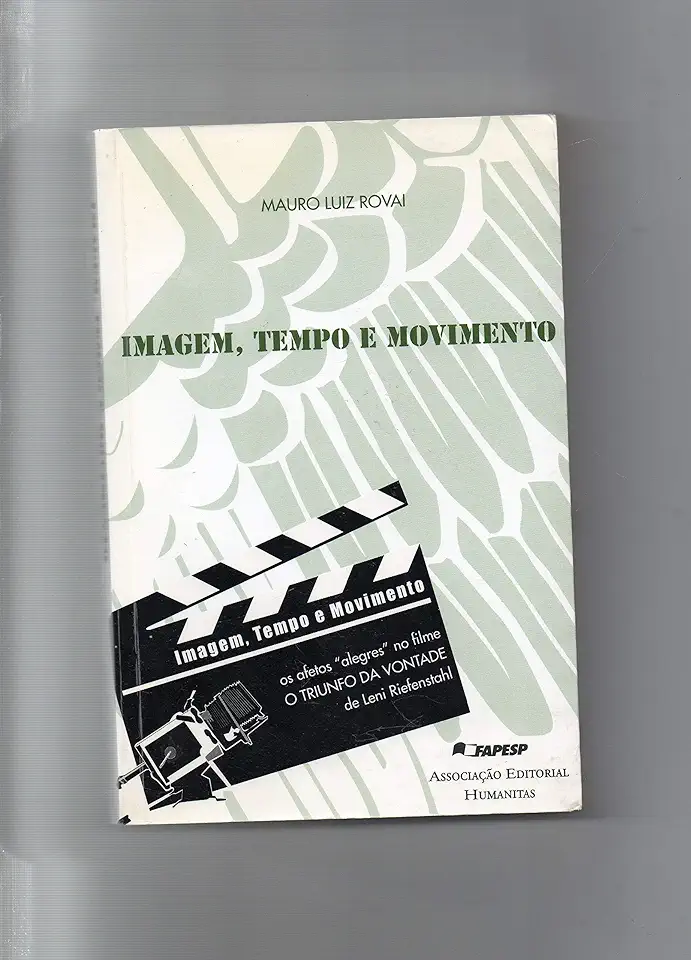
Image, Time and Movement - Mauro Luiz Rovai
Image, Time and Movement: A Journey Through the History of Cinema
Introduction
In his groundbreaking book, Image, Time and Movement, Mauro Luiz Rovai takes readers on a captivating journey through the history of cinema, exploring the evolution of visual storytelling and its profound impact on society and culture. Rovai's comprehensive analysis spans from the early days of silent films to the cutting-edge techniques of contemporary cinema, providing a comprehensive understanding of the art form's development and significance.
The Birth of Cinema
Rovai begins by tracing the origins of cinema, highlighting the contributions of pioneers such as the Lumière brothers and Georges Méliès. He delves into the technical innovations that made moving pictures possible, including the development of the cinematograph and the use of celluloid film. Rovai also examines the early narrative structures and genres that emerged during this period, laying the foundation for the future of filmmaking.
The Silent Era
The book dedicates a substantial section to the silent era, which Rovai argues was a crucial period in the development of cinematic language. He analyzes the unique storytelling techniques employed during this time, such as the use of intertitles, expressive gestures, and innovative editing styles. Rovai also highlights the rise of iconic silent film stars, including Charlie Chaplin, Buster Keaton, and Greta Garbo, whose performances transcended language barriers and captivated audiences worldwide.
The Advent of Sound
Rovai then explores the transition from silent to sound films, examining the challenges and opportunities that this technological advancement presented. He discusses the impact of sound on narrative structure, acting styles, and audience experience, showcasing how it revolutionized the art of filmmaking. Rovai also analyzes the rise of Hollywood as the dominant center of film production and the emergence of the studio system, which shaped the industry for decades to come.
The Golden Age of Hollywood
The book delves into the golden age of Hollywood, a period marked by unparalleled creativity and artistic achievement. Rovai examines the contributions of legendary filmmakers such as Alfred Hitchcock, John Ford, and Stanley Kubrick, who pushed the boundaries of cinematic storytelling and left an indelible mark on the history of cinema. He also explores the rise of film genres such as the Western, the musical, and the film noir, which captivated audiences and defined the era's cinematic landscape.
The French New Wave and Beyond
Rovai dedicates a section to the French New Wave, a revolutionary movement that emerged in the late 1950s and challenged conventional filmmaking practices. He analyzes the innovative techniques employed by directors like Jean-Luc Godard and François Truffaut, who broke away from traditional narrative structures and experimented with unconventional editing, camerawork, and sound design. Rovai also explores the influence of the French New Wave on global cinema and its lasting impact on the art form.
Contemporary Cinema
The book concludes by examining contemporary cinema, characterized by rapid technological advancements and a diverse range of filmmaking styles. Rovai discusses the rise of digital filmmaking, the impact of globalization on film production, and the emergence of new distribution platforms such as streaming services. He also analyzes the current state of the film industry, including the challenges and opportunities facing filmmakers in the 21st century.
Conclusion
Image, Time and Movement is a comprehensive and engaging exploration of the history of cinema, offering readers a deeper understanding of the art form's evolution and its profound impact on society and culture. Mauro Luiz Rovai's insightful analysis and engaging writing style make this book a must-read for film enthusiasts, scholars, and anyone interested in the power of visual storytelling.